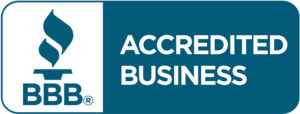Common financial wisdom tells us that as a paid member of the American workforce, you should contribute the maximum to your 401(k), 403(b), 457(b) or similar retirement plan, especially if your organization matches a percentage of your contributions.
But not every company has one of these plans. As an individual taxpayer with earned income, you have other options available to you in order to save for retirement, including the IRA or “Individual Retirement Account.”
An IRA is a type of account which acts as a shell or holder. Within the IRA, you can invest in many different types of assets—you have far more choices than your company 401(k)’s short list of fund options. You can choose between CDs, government bonds, mutual funds, ETFs, stocks, annuities—almost any type of investment available. You can open an IRA account at a bank, brokerage, mutual fund company, insurance company, or some may be opened directly online.
The question is, should you open your IRA as a traditional IRA or a Roth IRA? Your decision should be based on your income as well as your current and future tax situation, because both Roth IRAs and traditional IRAs are retirement savings and investment vehicles subject to different IRS rules.
Here’s a basic overview of how a Roth compares to a traditional IRA:
+ The biggest difference between Roth versus traditional IRA retirement accounts is that Roth IRA contributions are made with post-tax dollars, while traditional IRA contributions are typically made with pre-tax dollars. This gets accounted for on your tax return in the year you choose to make the contribution. You have until the April 15 tax deadline to open or contribute to either type of IRA.
+ When you begin taking money out of these two types of accounts for retirement, traditional IRA distributions are treated as ordinary income and taxed accordingly, while Roth IRA distributions are usually taken out tax-free, because you already paid income taxes on the money before you invested it.
Essentially, with a Roth IRA, your interest, dividends and capital gains which accumulate inside it are tax-free as long as you follow all Roth IRA withdrawal rules.
+ Roth IRAs have income restrictions that may disqualify higher-income people from participating; traditional IRAs do not.
For instance, in order to contribute to a Roth IRA for 2020, single tax filers must have a modified adjusted gross income (MAGI) of less than $139,000 while the MAGI limit for married filers is $206,000. Note phaseouts here: https://www.irs.gov/retirement-plans/plan-participant-employee/amount-of-roth-ira-contributions-that-you-can-make-for-2020
+ The annual maximum contribution limits for both traditional IRAs and Roth IRAs are the same. For 2020, you can contribute up to $6,000 depending on your income, plus an additional $1,000 catch-up contribution if you reach age 50 by the end of the tax year.
If married, you can contribute up to that amount for yourself in your own IRA, plus up to that amount in a separate IRA for your non-working or low-earning spouse subject to certain restrictions.
If you are eligible to contribute to both types of IRAs, you may divide your contributions between a Roth and traditional IRA. However, your total contribution to both IRAs must not exceed the total limit for that tax year (including the catch-up contribution if you’re age 50 or over).
+ Roth IRA contributions have never been deductible on your taxes, but contributions to a traditional IRA may be deductible on federal and state tax returns, lowering your taxable income for the year, depending on your tax status and whether or not you or your spouse contributes to a plan through work such as a 401(k).
If you do participate in a plan at work like a 401(k), and if your income is less than $75,000 for an individual or $124,000 for married filers, your traditional IRA may be at least partially tax deductible for 2020. More info here: https://www.irs.gov/retirement-plans/plan-participant-employee/2020-ira-contribution-and-deduction-limits-effect-of-modified-agi-on-deductible-contributions-if-you-are-covered-by-a-retirement-plan-at-work
NOTE: Even if you have a high income, a non-tax-deductible traditional IRA still may be opened for you or your spouse.
+ Both traditional IRA and Roth IRA contributions may make you eligible for a “saver’s tax credit” if your income is low enough. The 2020 AGI (adjusted gross income) limits for the saver’s credit are $32,500 for single filers and $65,000 for married couples filing jointly.
+ Roth IRA accounts are not subject to annual RMDs, or Required Minimum Distributions, which are required for traditional IRA accounts starting at age 72. The amounts withdrawn are subject to ordinary income tax based on your tax bracket for the year.
Roth IRA withdrawals:
When it comes to withdrawing money, you can withdraw your Roth IRA contributions at any time, at any age with no penalty as long as the account has been in place for five years, so your Roth IRA can double as your emergency fund.
However, if you withdraw Roth IRA earnings prior to reaching age 59-1/2, you may have to pay income taxes on them, with some exceptions, such as first-time homebuyer expenses up to $10,000. Qualified education and hardship withdrawals may also be available before the age limit and without the five-year waiting period, but you may have to pay tax on any amount that was attributed to earnings.
Remember, with a Roth IRA, there are no RMDs. If you don’t need the money, you’re not required to withdraw any money from your Roth IRA at all, and it can pass to your heirs with tax advantages, although beneficiaries will have to withdraw all the money within 10 years.
Traditional IRA withdrawals:
Traditional IRA withdrawals come with a 10% tax penalty before age 59-1/2, plus ordinary income taxes will be due on the amount withdrawn.
Certain exceptions to the tax penalty on early withdrawals may apply, you may withdraw up to $10,000 to pay for some hardships, health care, disability or higher education expenses, or to make a down payment on your first home. NOTE: Although there may not be a penalty, you will still have to pay income taxes on the withdrawal.
With traditional IRAs, RMDs start at age 72 whether you need the money or not, and you have to pay ordinary income tax on the amounts withdrawn each tax year. There is no grace period to April 15; you must withdraw the money each year by midnight on December 31 or pay a 50% penalty plus taxes owed.
Additionally, beneficiaries must pay taxes on inherited traditional IRA accounts within 10 years.
+ You can convert a traditional IRA to a Roth IRA, but strict rules apply. And be careful, because you have to pay income taxes on the money converted, and recent tax law changes mean you can’t undo this later. Doing this over a period of years can save some people a lot of money in taxes during retirement.
+ If you are a business owner or have self-employment income, you may be eligible to set up a Simplified Employee Pension or (SEP) IRA, or a SIMPLE IRA (Savings Incentive Match Plan for Employees), depending on your company’s structure. You can usually contribute a lot more money to these plans than you can to traditional IRA or Roth IRA accounts.
+ One final note. It is very important for you to understand that the beneficiaries you name on your 401(k), 403(b), 457(b), traditional IRA, Roth IRA and insurance policies take precedence over your estate documents. That’s why it’s critical to make sure that your beneficiaries are always kept up-to-date.
If you have any questions about this information, or want to review or update your current financial or retirement planning documents, we can help. Contact us.
This article is for informational purposes only and is not intended to provide any individual with tax or financial advice. We encourage you to consult with your tax professional, financial advisor or attorney to discuss your personal situation. It’s also important to keep in mind that Congress can change the rules regarding these accounts at any time. The regulations may be very different when you retire.
Sources:
https://www.thebalance.com/what-is-an-ira-and-how-many-types-of-iras-are-there-2388700
https://www.rothira.com/traditional-ira-vs-roth-ira
https://www.investopedia.com/retirement/roth-vs-traditional-ira-which-is-right-for-you/
https://20somethingfinance.com/savers-tax-credit/















